
Table of Contents
ToggleFind the Best Eye Surgeon in Kolkata for Best Ophthalmologist Treatments
When it comes to safeguarding one of our most precious senses, our vision, seeking the expertise of the “best eye surgeon in Kolkata” or the “best ophthalmologist in Kolkata” is paramount. Dr. Sudipta Mitra stands out as a beacon of excellence in the realm of eye care in this vibrant city.
we will delve into the world of Dr. Sudipta Mitra and explore why he is renowned as a top-tier eye surgeon and ophthalmologist in Kolkata. His dedication to preserving and enhancing the gift of sight has earned him a distinguished reputation among patients and peers alike.
Dr. Mitra is a highly respected member of the ophthalmic community in Kolkata. She is a member of the All India Ophthalmological Society and the Indian Society of Cataract and Refractive Surgeons, eye doctor in Kolkata. She is also a regular speaker at national and international conferences on ophthalmology.
Here are some of the reasons why Dr. Sudipta Mitra is considered to be one of the best eye surgeons in Kolkata:
- She has over 16 years of experience in the field of ophthalmology.
- She is an expert in cataract surgery, refractive surgery, and other complex eye procedures.
- She is a pioneer of FEMTO-ASSISTED LASER CATARACT SURGERY (FLACS) in Kolkata.
- She is a skilled and experienced LASIK and ICL surgeon.
- She is known for her compassionate and caring approach towards her patients.
- She is a highly respected member of the ophthalmic community in Kolkata.
What We Offer
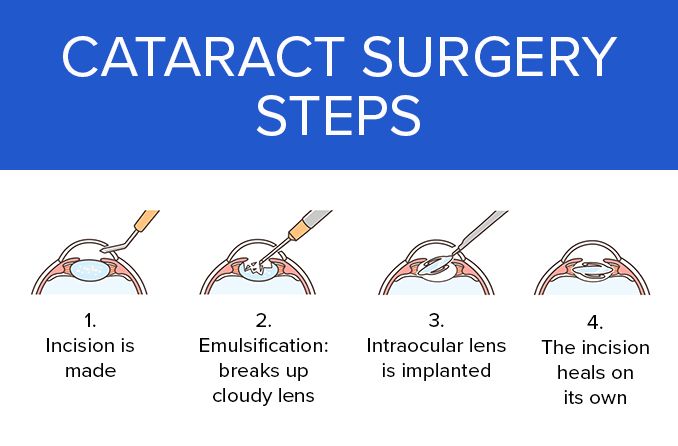
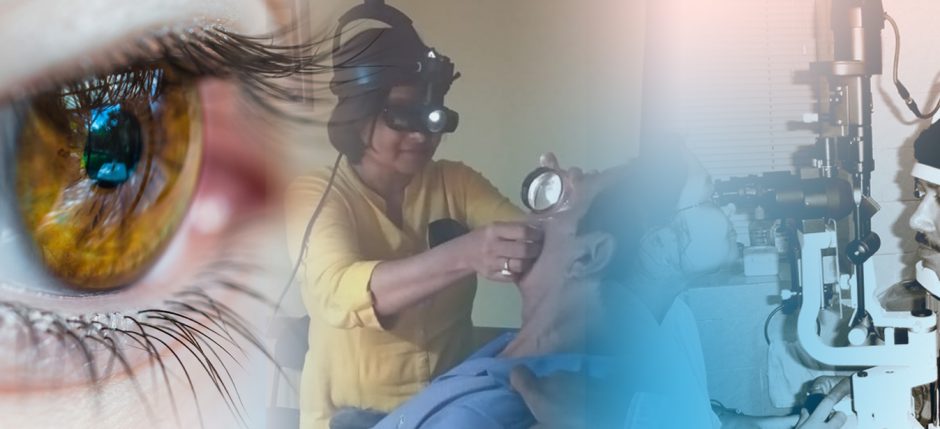
Cataract Surgery By The Best Eye Surgeon In Kolkata
Dr. Sudipta Mitra is one of the best cataract surgeons in Kolkata, India. She has over 18 years of experience in the field of ophthalmology, and is a highly skilled and qualified surgeon. She is known for her expertise in Femto Assisted Laser Cataract Surgery (FLACS) and Refractive Cataract Surgery, which are the most advanced and minimally invasive cataract surgery techniques available.
Dr. Mitra is a Senior Consultant Eye Surgeon at AMRI Medical Centre, Silverline Eye Hospital, best ophthalmologist in kolkata, and Shradha Health Care in Kolkata. She is also the Director and Consultant Eye Surgeon at R.M. Eye Foundation. She is a member of several prestigious organizations, including the All India Ophthalmological Society, the Indian Society of Cataract & Refractive Surgeons, and the American Academy of Ophthalmology.
Dr. Mitra is a highly respected and sought-after cataract surgeon. She is known for her meticulous surgical skills, her commitment to patient care, and her excellent patient outcomes. She is also a passionate advocate for public education about eye health and vision care.
If you are looking for the best cataract surgeon in Kolkata, Dr. Sudipta Mitra is an excellent choice. She is a highly skilled and experienced surgeon with a proven track record of success, eye doctor in kolkata. She is also a compassionate and caring doctor who is dedicated to providing her patients with the best possible care
Types of Cataract Surgery
Phacoemulsification (Phaco):
Phacoemulsification (Phaco) is a modern cataract surgery technique that uses ultrasound waves to break up the cloudy lens of the eye into small pieces. The procedure involves making a small incision in the cornea, through which a tiny probe is inserted. The ultrasound waves emitted by the probe fragment the cataract, which is then suctioned out. An artificial intraocular lens (IOL) is implanted to replace the removed lens. Phacoemulsification is minimally invasive, offers faster recovery, and is the most commonly performed cataract surgery today.
Phacoemulsification (Phaco):
Phacoemulsification (Phaco) is a modern cataract surgery technique that uses ultrasound waves to break up the cloudy lens of the eye into small pieces. The procedure involves making a small incision in the cornea, through which a tiny probe is inserted. The ultrasound waves emitted by the probe fragment the cataract, which is then suctioned out. An artificial intraocular lens (IOL) is implanted to replace the removed lens. Phacoemulsification is minimally invasive, offers faster recovery, and is the most commonly performed cataract surgery today.
Extracapsular Cataract Extraction (ECCE):
Extracapsular Cataract Extraction (ECCE) is a surgical procedure used to remove advanced cataracts. In this method, a large incision is made in the cornea, allowing the cloudy lens to be removed in one piece while leaving the back part of the lens capsule intact. An artificial intraocular lens (IOL) is then implanted to replace the natural lens. ECCE is particularly useful for dense cataracts that cannot be treated with ultrasound-based techniques. However, it involves a longer recovery time and higher risk of complications due to the larger incision.
Intracapsular Cataract Extraction (ICCE):
Intracapsular Cataract Extraction (ICCE) is an older surgical technique used to treat cataracts. In this procedure, a large incision is made to remove the entire lens along with its surrounding capsule. An artificial intraocular lens (IOL) is then placed, often in a different part of the eye. While ICCE is rarely used today due to its high risk of complications and lengthy recovery time, it may still be considered in specific cases where other methods are not feasible. Advances in cataract surgery have largely replaced ICCE with safer, less invasive techniques.
Laser-Assisted Cataract Surgery:
Laser-assisted cataract surgery uses a femtosecond laser to enhance precision in cataract removal. The laser makes precise incisions and softens the cataract, reducing the need for ultrasound energy. This method often results in more accurate outcomes and a smoother procedure. The laser also helps in creating the opening in the lens capsule and fragmenting the lens for easier removal. While more expensive than traditional methods, laser-assisted surgery offers potential benefits like reduced risk of complications and improved visual results, making it a popular choice for many patients.
Testimonial
Refractive Surgery by the best ophthalmologist in kolkata
Dr. Sudipta Mitra is a highly skilled and experienced refractive surgeon, eye surgeon, and ophthalmologist in Kolkata, India. She has over 20 years of experience in the field, and is known for her expertise in LASIK surgery, FLACS (Femto-Assisted Laser Cataract Surgery), and refractive cataract surgery.
Dr. Mitra is a highly qualified professional. She completed her MBBS and MS degrees from R.G. Kar Medical College and Hospital, Kolkata, and then went on to do a fellowship in Phacoemulsification Surgery from Sankara Nethralaya, Chennai. She is also a Fellow of the International College of Ophthalmologists.
Dr. Mitra is a highly respected member of the ophthalmic community. She is a member of the All India Ophthalmological Society (AIOS), best ophthalmologist in Kolkata, the Laser and Refractive Surgery Society of India (LRSI), and the European Society of Cataract and Refractive Surgeons (ESCRS). She is also a member of the executive committee of the Ophthalmological Society of West Bengal (OSWB).
Dr. Mitra is passionate about her work, and is committed to providing her patients with the highest quality of care. She is known for her gentle bedside manner and her ability to explain complex medical concepts in a way that is easy for her patients to understand.
Dr. Mitra has a strong reputation for being one of the best refractive surgeons, eye surgeons, and ophthalmologists in Kolkata. She has helped thousands of patients to achieve clear vision and improve their quality of life.
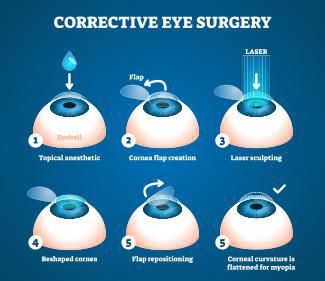
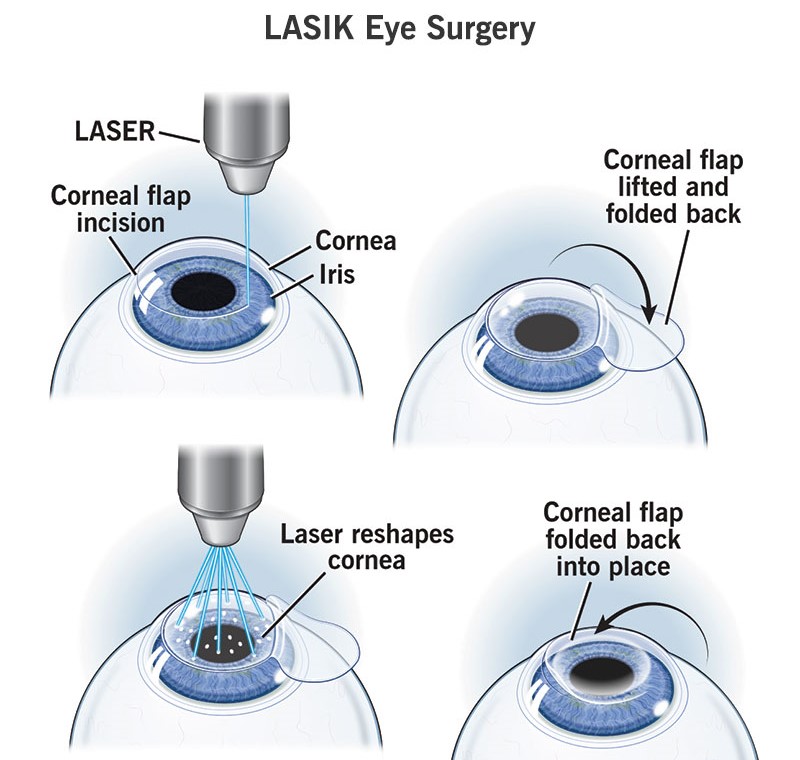
Types of Refractive Surgery
LASIK (Laser-Assisted In Situ Keratomileusis):
LASIK, or Laser-Assisted In Situ Keratomileusis, is a widely performed refractive surgery aimed at correcting vision problems like nearsightedness, farsightedness, and astigmatism. During LASIK, a precise laser is used to reshape the cornea, enabling light to focus correctly onto the retina, thus improving vision without the need for glasses or contacts. The procedure involves creating a thin flap on the cornea, which is folded back to access the underlying tissue. LASIK is known for its rapid recovery time and high success rates, making it a popular choice for individuals seeking lasting visual clarity and reduced dependence on corrective eyewear.
PRK (Photorefractive Keratectomy):
Photorefractive Keratectomy (PRK) is a type of refractive surgery that corrects vision by reshaping the cornea with a laser. Unlike LASIK, PRK does not create a corneal flap; instead, the outer layer of the cornea (epithelium) is removed before applying the laser to reshape the underlying tissue. Over time, the epithelium regenerates. PRK is suitable for individuals with thin corneas or those involved in contact sports. While recovery may take longer compared to LASIK, PRK can achieve excellent visual outcomes, correcting nearsightedness, farsightedness, and astigmatism effectively with careful post-operative care and follow-up.
LASEK (Laser Epithelial Keratomileusis):
LASEK (Laser Epithelial Keratomileusis) is a refractive surgery technique that combines aspects of both LASIK and PRK procedures. In LASEK, the outer layer of the cornea (epithelium) is gently loosened and folded back, allowing a laser to reshape the underlying corneal tissue to correct vision. Unlike LASIK, no corneal flap is created, making it a suitable option for patients with thinner corneas or those at higher risk of flap-related complications. After the cornea is reshaped, the epithelial layer is repositioned and allowed to heal naturally. LASEK is effective in treating mild to moderate nearsightedness, farsightedness, and astigmatism.
SMILE (Small Incision Lenticule Extraction):
SMILE (Small Incision Lenticule Extraction) is an advanced laser eye surgery used to correct nearsightedness and astigmatism. Unlike LASIK and PRK, SMILE involves creating a small incision to remove a precise lenticule (a tiny disc-shaped piece of corneal tissue) from within the cornea, reshaping its curvature. This minimally invasive procedure preserves more of the cornea’s structural integrity, potentially leading to quicker recovery times and reduced risk of dry eye syndrome compared to traditional methods. SMILE is particularly suitable for patients seeking laser vision correction with a preference for minimally invasive techniques and fast recovery.
RLE (Refractive Lens Exchange):
Refractive Lens Exchange (RLE) is a surgical procedure used to correct refractive errors by replacing the eye’s natural lens with an artificial intraocular lens (IOL). Similar to cataract surgery, RLE is often chosen by patients with severe nearsightedness or farsightedness, or those who are not suitable candidates for LASIK or other vision correction surgeries. It offers a permanent solution to reduce dependence on glasses or contact lenses, improving both distance and near vision. RLE is a safe and effective option for individuals seeking long-term visual clarity and quality of life enhancement through surgical intervention.
ICL (Implantable Collamer Lens):
Implantable Collamer Lens (ICL) is a type of refractive surgery where a biocompatible lens is inserted into the eye to correct vision. Unlike LASIK or PRK, which reshape the cornea, ICL works with the eye’s natural lens to improve vision. It is primarily used for patients with moderate to severe nearsightedness, offering high-quality vision correction while preserving the corneal tissue. The procedure is reversible and provides predictable outcomes, making it a preferred option for individuals seeking independence from glasses or contact lenses without altering the corneal structure permanently. ICL surgery is known for its safety and effectiveness in enhancing visual acuity and overall quality of life.
Conductive Keratoplasty (CK):
Conductive Keratoplasty (CK) is a minimally invasive refractive surgery used to correct mild to moderate farsightedness (hyperopia) and astigmatism. It involves using radiofrequency energy to shrink collagen in the peripheral cornea, steepening its curvature and improving the eye’s focusing ability. CK is particularly suitable for patients who are not candidates for LASIK or PRK due to their eye condition or age-related farsightedness (presbyopia). This procedure is quick, often taking less than 10 minutes per eye, and typically results in minimal discomfort and rapid visual recovery. CK offers a viable option for those seeking improved near vision without the need for glasses or contact lenses.
Intacs (Intracorneal Ring Segments):
Intacs, or Intracorneal Ring Segments, are small, semi-circular plastic implants placed within the cornea to treat mild to moderate keratoconus and sometimes correct low levels of nearsightedness (myopia). By reshaping the cornea, Intacs help improve visual acuity and reduce irregular astigmatism associated with keratoconus, a progressive thinning and bulging of the cornea. The procedure is minimally invasive and reversible, with the rings providing structural support to flatten the cornea and enhance its optical properties. Intacs can delay or potentially eliminate the need for corneal transplant surgery in keratoconus patients, offering a reliable option for improving vision and quality of life.
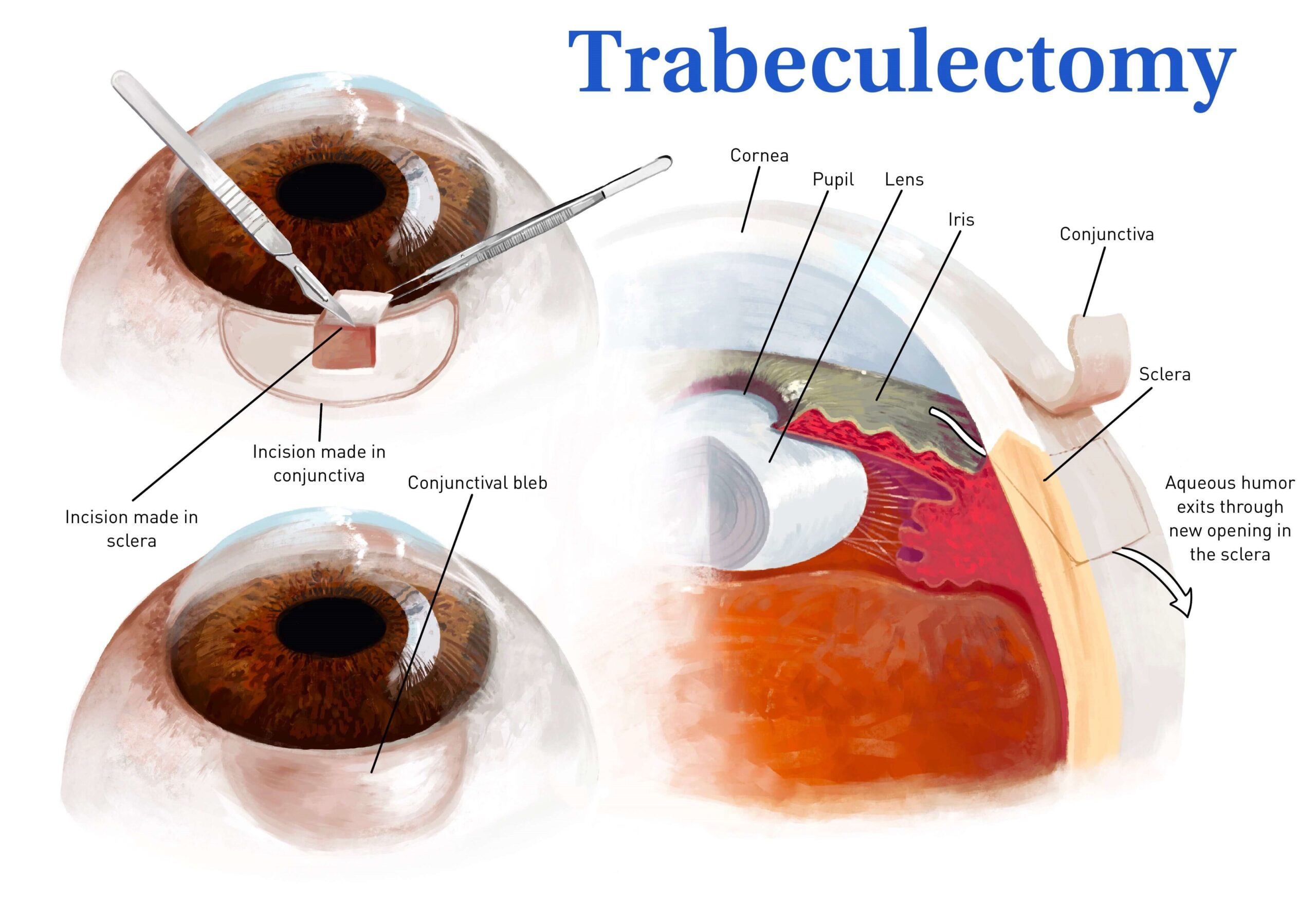
Glaucoma eye doctor in kolkata
Dr. Sudipta Mitra is a highly experienced and skilled glaucoma surgeon, eye surgeon, and ophthalmologist in Kolkata, India. She has over 16 years of experience in the field and is known for her expertise in the treatment of all types of glaucoma, best ophthalmologist in Kolkata, including primary open-angle glaucoma, angle-closure glaucoma, and secondary glaucoma.
Dr. Mitra is also a skilled cataract surgeon and performs a variety of refractive surgeries, such as LASIK and ICL surgery. She is also an expert in the management of other eye diseases, such as diabetic retinopathy, macular degeneration, and corneal diseases.
Dr. Mitra is a highly respected member of the ophthalmic community and has published several papers in peer-reviewed journals, eye doctor in kolkata. She is also a regular speaker at national and international conferences.
- Dr. Mitra is a highly experienced and skilled glaucoma surgeon, eye surgeon, and ophthalmologist.
- She has a deep understanding of the latest advances in eye care and offers a wide range of treatments for all types of eye diseases.
- Dr. Mitra is committed to providing her patients with the highest quality of care and attention.
- She is known for her compassionate and patient-centered approach to care.
If you are looking for a highly qualified and experienced glaucoma surgeon, eye surgeon, or ophthalmologist in Kolkata, Dr. Sudipta Mitra is an excellent choice.
Types of Glaucoma Surgery
Trabeculectomy:
Trabeculectomy is a surgical procedure used to treat glaucoma by creating a new drainage channel for the aqueous humor, the fluid inside the eye. It involves making a small flap in the sclera (white part of the eye) to create a reservoir under the conjunctiva (outer membrane). This reservoir allows excess fluid to drain out of the eye, reducing intraocular pressure. By improving fluid outflow, trabeculectomy aims to prevent optic nerve damage and preserve vision in patients with glaucoma, particularly when other treatments have not sufficiently controlled intraocular pressure.
Trabeculoplasty:
Trabeculoplasty is a laser surgery aimed at reducing intraocular pressure in glaucoma patients. It involves using a focused laser beam to treat the trabecular meshwork, a drainage area within the eye. By increasing drainage efficiency, trabeculoplasty helps to regulate the flow of aqueous humor, the fluid that nourishes the eye. There are two main types: Argon Laser Trabeculoplasty (ALT) and Selective Laser Trabeculoplasty (SLT). ALT uses an argon laser to improve fluid outflow, while SLT selectively targets specific cells, minimizing damage to surrounding tissue. Trabeculoplasty is often chosen as an initial treatment or alongside medication to manage glaucoma effectively.
MIGS (Minimally Invasive Glaucoma Surgery):
Minimally Invasive Glaucoma Surgery (MIGS) encompasses a group of advanced procedures designed to reduce intraocular pressure with minimal trauma and rapid recovery. Unlike traditional glaucoma surgeries, MIGS techniques are less invasive and often performed in conjunction with cataract surgery. They typically involve tiny devices or stents that create alternative pathways for aqueous humor drainage, such as the iStent or Hydrus Microstent. MIGS aims to preserve the eye’s anatomy and function while effectively managing glaucoma, offering patients a safer and quicker option compared to more invasive surgical approaches.
Tube Shunts (Drainage Implants):
Tube shunts, also known as drainage implants, are devices used in glaucoma surgery to manage intraocular pressure by creating an alternative drainage pathway for the aqueous humor. These small tubes are typically made of biocompatible materials like silicone or polypropylene and are implanted into the eye to facilitate fluid drainage from the anterior chamber to a reservoir plate placed under the conjunctiva. Tube shunts, such as the Ahmed Valve or Baerveldt Tube, help regulate pressure in cases where traditional surgical or medical treatments have been ineffective, offering a viable solution to manage glaucoma and preserve vision.
Cyclophotocoagulation:
Cyclophotocoagulation is a medical procedure used to treat glaucoma, a condition characterized by increased intraocular pressure that can damage the optic nerve. This technique involves using a laser to target and destroy specific parts of the ciliary body, the structure in the eye responsible for producing aqueous humor (the fluid inside the eye). By reducing fluid production, cyclophotocoagulation helps lower intraocular pressure. The procedure is typically reserved for patients with advanced glaucoma who do not respond well to medications or other surgical treatments. It is performed by an ophthalmologist and can be done in an outpatient setting.
Iridotomy:
Iridotomy is a medical procedure used to treat narrow or closed-angle glaucoma. It involves creating a small hole in the iris, the colored part of the eye, using a laser. This hole allows the aqueous humor (the fluid inside the eye) to flow more freely between the front and back chambers of the eye, reducing intraocular pressure and preventing vision loss. The procedure is typically quick, performed under local anesthesia, and has a high success rate. Potential side effects include temporary blurred vision and light sensitivity. Regular follow-ups are essential to monitor eye health post-procedure.
Iridoplasty:
Iridoplasty is a laser eye procedure used to treat certain types of glaucoma and other iris-related conditions. The procedure involves the use of a laser to create small burns in the peripheral iris, causing it to contract and reshape. This helps improve the drainage of aqueous humor, reducing intraocular pressure. Iridoplasty is particularly beneficial for patients with angle-closure glaucoma or plateau iris syndrome. It is a minimally invasive procedure typically performed under local anesthesia, offering a relatively quick recovery and reducing the need for more invasive surgical interventions.
Deep Sclerectomy:
Deep sclerectomy is a minimally invasive glaucoma surgery aimed at reducing intraocular pressure by improving aqueous humor outflow. During the procedure, a portion of the eye’s sclera, along with the trabecular meshwork and Schlemm’s canal, is removed to create an alternative drainage pathway. Unlike traditional trabeculectomy, deep sclerectomy preserves the conjunctiva and minimizes the risk of postoperative complications such as infection and hypotony. This surgery is particularly beneficial for patients with open-angle glaucoma, offering a safer, effective solution for managing the disease and preserving vision.
Canaloplasty:
Canaloplasty is a minimally invasive surgical procedure used to treat open-angle glaucoma. It involves the dilation and tensioning of Schlemm’s canal, a circular channel in the eye that drains aqueous humor. By inserting a microcatheter into the canal, surgeons can enhance fluid outflow and reduce intraocular pressure, potentially delaying or eliminating the need for more invasive glaucoma surgeries. Canaloplasty is typically considered for patients who do not respond adequately to medication. The procedure is designed to improve the natural drainage system of the eye, offering a safer alternative with fewer complications compared to traditional glaucoma surgeries.
Viscocanalostomy:
Viscocanalostomy is a surgical procedure used to treat open-angle glaucoma, a condition characterized by increased intraocular pressure that can damage the optic nerve. The procedure involves creating a small flap in the sclera (white part of the eye) and injecting a viscoelastic substance into Schlemm’s canal, a circular channel in the eye that drains aqueous humor. This helps to improve the outflow of fluid from the eye, thereby reducing intraocular pressure. Viscocanalostomy is considered a safer alternative to traditional trabeculectomy, with fewer complications and a quicker recovery time.
Retina Surgery by the best eye surgeon / doctor in Kolkata
Dr. Sudipta Mitra is a retina surgeon in Kolkata, India. She has over 16 years of experience in the field of ophthalmology and specializes in the treatment of diseases and disorders of the retina, including diabetic retinopathy, macular degeneration, and retinal detachment.
Dr. Mitra is a highly skilled and experienced surgeon and is known for her expertise in complex retinal surgeries. She is also a member of several prestigious ophthalmic organizations, including the All India Ophthalmological Society and the American Academy of Ophthalmology.
Dr. Mitra practices at several hospitals and clinics in Kolkata, including:
- AMRI Medical Center
- Silverline Eye Hospital
- R.M. Eye Foundation
- Shradha Health Care
She is also a visiting consultant at several other hospitals in Kolkata and West Bengal.
Dr. Mitra is a highly respected and compassionate doctor and is known for her dedication to her patients. She is committed to providing her patients with the best possible care and treatment.
If you are looking for a retina surgeon in Kolkata, Dr. Sudipta Mitra is an excellent choice. She is a highly skilled and experienced surgeon with a proven track record of success, eye doctor in Kolkata. She is also a compassionate and caring doctor who is dedicated to her patients.

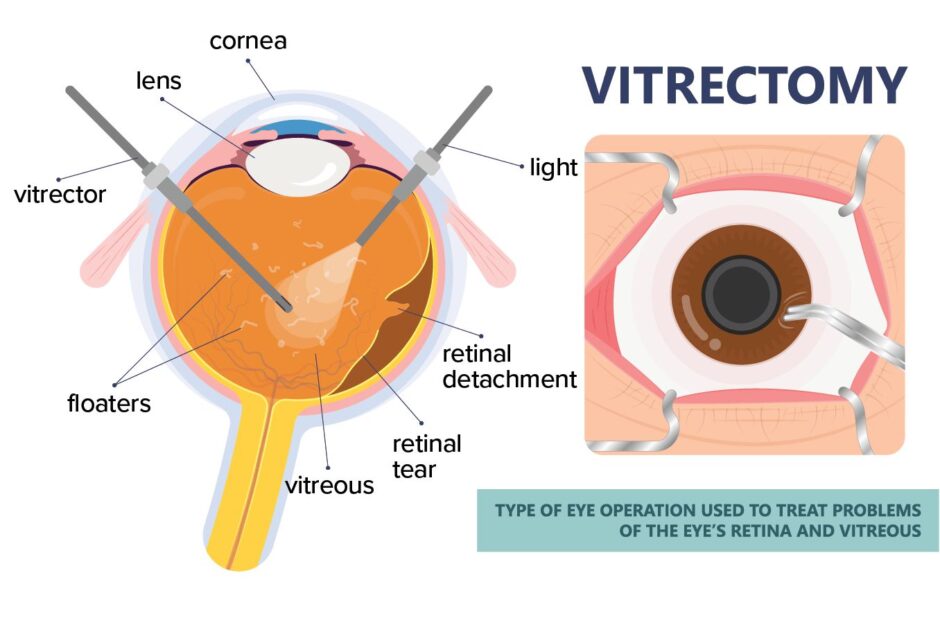
Types of Retina Surgery
Laser Surgery (Photocoagulation):
Laser surgery (photocoagulation) is a medical procedure used to treat various retinal conditions. In this technique, a focused laser beam is applied to the retina to create small burns, which seal leaking or abnormal blood vessels. This helps to prevent further damage and vision loss. There are two main types: panretinal photocoagulation (PRP) for treating proliferative diabetic retinopathy and focal/grid photocoagulation for managing macular edema. The procedure is typically performed on an outpatient basis and is essential in preserving vision and preventing complications in patients with retinal disorders.
Vitrectomy:
Vitrectomy is a surgical procedure that involves removing the vitreous gel from the eye to treat various retinal conditions. This surgery provides better access to the retina, allowing for the repair of retinal detachments, macular holes, epiretinal membranes, and vitreous hemorrhage. During a vitrectomy, the vitreous is replaced with a saline solution, gas bubble, or silicone oil to maintain the eye’s shape. This procedure is typically performed by a vitreoretinal surgeon and may require a recovery period with specific head positioning to ensure optimal healing.
Scleral Buckling:
Scleral buckling is a surgical procedure used to repair retinal detachment. It involves placing a flexible silicone band (buckle) around the eye’s sclera (white part) to gently press the wall of the eye against the detached retina, facilitating reattachment. This band remains in place permanently and is often combined with other treatments like laser photocoagulation or cryotherapy to seal retinal tears. The surgery is usually performed under local or general anesthesia and has a high success rate in reattaching the retina and restoring vision.
Pneumatic Retinopexy:
Pneumatic Retinopexy is a minimally invasive retinal surgery used to repair certain types of retinal detachments. In this procedure, a gas bubble is injected into the vitreous cavity of the eye. The patient’s head is then positioned so the bubble presses against the retinal tear, helping to flatten the retina against the back wall of the eye. Once the retina is in place, the tear is sealed using laser or cryotherapy. This method allows for a shorter recovery time compared to other retinal surgeries and is typically performed under local anesthesia.
Retinal Detachment Surgery:
Retinal Detachment Surgery involves procedures to reattach the retina to the back of the eye, preventing vision loss. Key techniques include scleral buckling, where a silicone band is placed around the eye to push the wall against the retina, pneumatic retinopexy, which uses a gas bubble to press the retina back into place, and vitrectomy, which removes the vitreous gel to allow better access for retinal repair. These methods aim to restore the retina’s proper position, improving or preserving vision. The choice of technique depends on the detachment’s severity and specific patient factors.
Macular Hole Surgery:
Macular hole surgery typically involves a vitrectomy, where the vitreous gel is removed from the eye to prevent it from pulling on the retina. After the vitrectomy, a gas bubble is inserted into the eye to press against the macula, promoting the closure of the hole. Over time, the gas bubble gradually absorbs, and the eye refills with its natural fluid. Patients need to maintain a face-down position for several days post-surgery to keep the bubble in place, aiding in the healing process. This procedure helps improve central vision affected by the macular hole.
Epiretinal Membrane Peeling:
Epiretinal Membrane Peeling is a surgical procedure to remove a thin layer of scar tissue (epiretinal membrane) that forms on the surface of the retina. This membrane can cause vision distortion, blurriness, and decreased visual acuity. During the procedure, a vitreoretinal surgeon performs a vitrectomy to gain access to the retina and then carefully peels away the membrane. The surgery aims to restore smoother retinal surface and improve visual clarity. Recovery varies, with some patients experiencing gradual improvement in vision over several months.
Endophthalmitis Surgery:
Endophthalmitis surgery is a critical procedure to treat severe infections inside the eye, often caused by bacteria or fungi following surgery, injury, or injections. The surgery typically involves a vitrectomy, where the vitreous gel is removed to eliminate infectious material. Antibiotics or antifungal medications are injected directly into the eye to combat the infection. This urgent intervention aims to preserve vision and prevent further damage to the eye structures. Timely treatment is crucial to improve outcomes and reduce the risk of permanent vision loss.
Conclusion
In the vibrant city of Kolkata, finding the best eye surgeon or ophthalmologist is crucial for ensuring optimal eye health and vision. Amidst a plethora of healthcare professionals, a standout name emerges as the epitome of excellence in eye care – the best eye surgeon in Kolkata. With a stellar reputation built on a foundation of skill, expertise, and patient-centric care, this ophthalmologist has become a beacon of trust for those seeking top-notch eye treatment.
What sets the best eye surgeon in Kolkata apart is not just their advanced surgical techniques or state-of-the-art technology, but a holistic approach to eye care. From accurate diagnoses to personalized treatment plans, this ophthalmologist combines medical precision with compassionate care, creating a seamless experience for patients. Their commitment to staying abreast of the latest advancements in ophthalmology ensures that individuals receive cutting-edge solutions for various eye conditions.
Patients consistently commend the best eye surgeon in Kolkata for their unwavering dedication to restoring and enhancing vision. Whether addressing common refractive errors or performing intricate eye surgeries, this ophthalmologist’s unwavering commitment to excellence places them at the pinnacle of eye care in Kolkata. Choosing the best eye surgeon is an investment in one’s visual well-being, and in Kolkata, this esteemed professional stands as a testament to the pursuit of unparalleled eye care.
Frequently Asked Questions (FAQ)
Q. Who is the No 1 eye surgeon in India?
A. Dr. Sudipta Mitra is one of the top eye surgeons in India.
She is a highly experienced and skilled ophthalmologist with over 20 years of experience in the field. She is known for her expertise in cataract surgery, glaucoma surgery, and LASIK surgery. She is also a pioneer in the field of oculoplasty, which is a type of surgery that deals with the eyelids, tear ducts, and orbit.
Dr. Mitra is currently the Director of the Mitra Eye Clinic in Kolkata, top eye surgeon in Kolkata India. She is also a visiting consultant at several other leading eye hospitals in the country. She is a member of several prestigious ophthalmological societies and has published numerous papers in peer-reviewed journals.
Dr. Mitra is highly respected by her colleagues and patients alike. She is known for her dedication to her patients and her commitment to providing them with the best possible care.
Whether she is the No. 1 eye surgeon in India is a matter of opinion, but she is certainly one of the top eye surgeons in the country.
Q. Which doctor is best for eye?
A. Dr. Sudipta Mitra is a highly qualified and experienced ophthalmologist in Kolkata, India. She is a specialist in phacoemulsification, glaucoma, squint surgery, oculoplastic surgery, laser treatment for retinopathy, and LASIK treatment. She has over 20 years of experience in the field of ophthalmology and is highly regarded by her patients and colleagues.
A. An ophthalmologist is a medical doctor who specializes in eye and vision care. They are trained to diagnose and treat a wide range of eye conditions, including common vision problems such as astigmatism and cataracts, as well as more complex conditions such as glaucoma and macular degeneration. Ophthalmologists can also perform eye surgery.
Q. What qualifications should I look for in the best eye surgeon in Kolkata?
A. Look for a surgeon who is a board-certified ophthalmologist with relevant specialization and training.
Q. How can I find the best eye surgeon in Kolkata?
A. You can start by asking for recommendations from your primary care physician or optometrist. You can also search online, read reviews, and ask for referrals from friends and family.
Q. What types of eye surgeries can the best eye surgeon in Kolkata perform?
A. The best eye surgeons are typically skilled in a range of procedures, including cataract surgery, LASIK, corneal transplants, and glaucoma treatment.
Q. What is the cost of eye surgery in Kolkata, and does it vary between surgeons?
A. The cost of eye surgery can vary depending on the type of procedure and the surgeon’s reputation and experience. It’s essential to get cost estimates during a consultation.
Q. Do ophthalmologists in Kolkata perform LASIK surgery?
Yes, many ophthalmologists in Kolkata perform LASIK surgery for vision correction. Make sure to choose one with experience in this procedure.